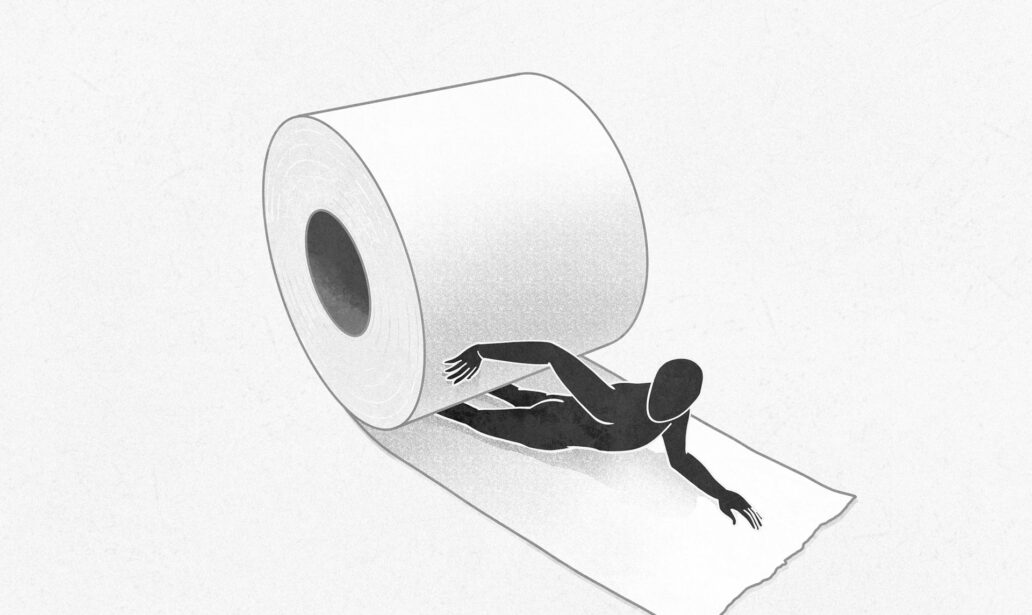As we reached the month of March, there was one thing that was constantly on our minds. Why was there no toilet paper in the stores? Although the answer isn’t merely simple, it does make sense why one of our basic goods was in extreme shortage.
Panic Buying
We all know the effects of panic buying now. Toilet paper, hand soap, canned and dry foods, and rubbing alcohol were all out of stock in our neighborhood stores. As reports of this new virus was circulating our tv and radio constantly, the thought of having to stay at home as much as possible to quarantine makes us realize how much we needed to stock up on things that we may need inside of our homes on a daily basis just in case we couldn’t (or wouldn’t) go outside. That is the first part of the panic buying. The second part is one that I, myself, am guilty of. In late February, I had gone to the supermarket, as usual to buy groceries for the family. I had known about this new coronavirus sweeping quickly throughout communities. Although living in Nebraska, I was not as concerned as those individuals living in large crowded cities. As I passed through the toilet paper aisle to get some more paper towels, I noticed a sign stating that toilet paper would be limited to 5 packages a family. It was odd to me that they had these signs posted on the shelving while the entire aisle was fully stocked. This was a sign I could not ignore. Although I knew I had a good amount of toilet paper at home, I grabbed one large package just in case. The following three weeks, there was no toilet paper on the shelves. Although most of the shortage in the beginning was blamed on panic buying, the shortages that continued were hardly the effects of panic buying or hoarding,
Stocking the back room
The idea of supply and demand is not always an exact science. Price, distribution, manufacturing, promotion, and all other factors that are part of marketing are all based on supply and demand models. The interesting thing with toilet paper is that supply and demand is actually almost an exact science. The amount of toilet paper made is simply based on population. Toilet paper producers make a certain amount each day to fulfill the average need of consumers. The start of panic buying however, threw all the estimates and predictions of supply and demand right out the window. As people started hoarding toilet paper and the shelves were empty, the only toilet paper reaching the shelves were the daily deliveries of predicted supply. For those who did not panic buy or have a supply at home, they relied on the small amount that would be delivered to the store based on normal delivery predictions. Empty shelves that got stocked with the days delivery became empty again in a matter of minutes due to demand or even another form of panic buying. One thing most people don’t know is that stores are routinely stocked from the trucks that come in regularly. There is not a whole warehouse in the back of a grocery store. Most of the items are already stocked inside the store. This is especially true of large items such as toilet paper. Normally, with a supply and demand model so accurate, there is no need to have a supply “in the back”.
Staying at home and the production of toilet paper
How many times do you use the toilet at work, a restaurant, or public place every week? How many times do you think your children uses the toilet at the school? My guess is unless you have a fear of going to the bathroom in public, the percentage of which you are not at home during that day is related to the percentage of how much you use the bathroom in other places. As of March and April, most families were cooped in their home using only the toilet at home. As the demand for the toilet paper that the household buys went up, the demand for commercial toilet paper went down. Shifting this demand on the types of toilet paper was almost sudden. There are many factors that go into the production of consumer needs when it comes to toilet paper.
- Consumer toilet paper is better than commercial toilet paper. It uses more resources such as thicker ply, rip off sheets, and less toilet paper that fits on a roll making the processing of a single roll more work
- Commercial rolls are huge. Even if they started selling commercial toilet paper at the stores, we would have nowhere to put it since our toilet paper holders aren’t able to hold them.
- Commercial toilet paper is individually wrapped and sent on pallets. The work and time for a pallet of commercial toilet paper is significantly less than a pallet full of our consumer wrapped toilet paper.
- Switching from commercial to consumer toilet paper is not a simple task for manufacturing. This requires change in machinery output, sizing, and even materials, as commercial toilet paper is made out of mostly recycles material as opposed to virgin fibers.
- Distribution to retail stores is now problem as the amount of trucks going in and out are slowing down.
The effects of the toilet paper shortage.
As we start getting back into our routines, the toilet paper industry will be affected once again. Switching back to the balance between commercial and consumer will be delicate and hard to predict.
